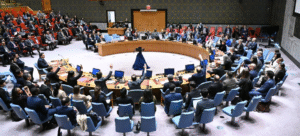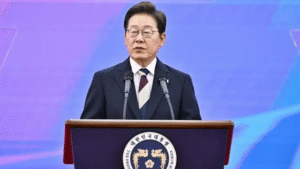A New Era of Economic Partnership? Decoding the Potential India-US Trade Deal
A Landmark Announcement Amidst Geopolitical Shifts
U.S. Vice President JD Vance’s recent declaration, during his visit to India, that the terms for a bilateral trade agreement have been finalized, has ignited significant interest and speculation. This announcement, if translated into reality, holds the potential to reshape the economic relationship between the two nations, promising increased trade, investment, and strategic cooperation at a critical juncture in global economics and geopolitics. Both the U.S. and India are actively seeking to diversify their supply chains and reduce their reliance on singular economic powers, making this potential agreement a strategically important development.

Strategic Economic Opportunities for Both Nations
The proposed trade agreement presents substantial economic opportunities for both the United States and India. For the U.S., India’s vast and rapidly expanding market offers a fertile ground for American businesses across diverse sectors, including technology, manufacturing, agriculture, and services. Conversely, India stands to gain from enhanced export opportunities, increased foreign investment, and accelerated economic development through access to the U.S. market. This mutually beneficial potential underscores the strategic importance of this trade deal.
Navigating the Complexities of Trade Negotiations
The success of this trade agreement hinges on the specifics of the finalized terms, which are yet to be publicly disclosed. Key areas of focus are expected to include tariff reductions, market access for goods and services, intellectual property protection, and regulatory cooperation. However, trade agreements of this scale are inherently complex, often requiring significant concessions from both sides. Sensitive sectors, such as agriculture and pharmaceuticals, may pose considerable challenges, demanding careful negotiation and compromise. Furthermore, the political climate in both countries could influence the agreement’s trajectory, potentially leading to delays or modifications.
Geopolitical Implications: Strengthening Strategic Ties
Beyond its economic implications, the potential trade agreement carries significant geopolitical weight. It serves to solidify the strategic partnership between the U.S. and India, reinforcing their shared commitment to a free and open Indo-Pacific region. In an increasingly competitive global landscape, deepening economic ties can lay the groundwork for broader cooperation on security and diplomatic fronts. This strategic alignment underscores the importance of the trade deal in the context of international relations.
From Announcement to Implementation: A Cautious Optimism
While Vice President Vance’s announcement is a promising development, it is crucial to approach it with cautious optimism. The journey from finalized terms to a fully implemented trade agreement is a complex and protracted process. The final details of the agreement, the political will of both governments, and the evolving economic and geopolitical landscape will all play pivotal roles in determining its ultimate success. If effectively implemented, this trade deal could usher in a new era of economic cooperation between the United States and India, benefiting both nations and contributing to a more stable and prosperous global economy.




















